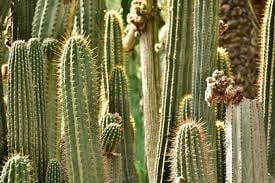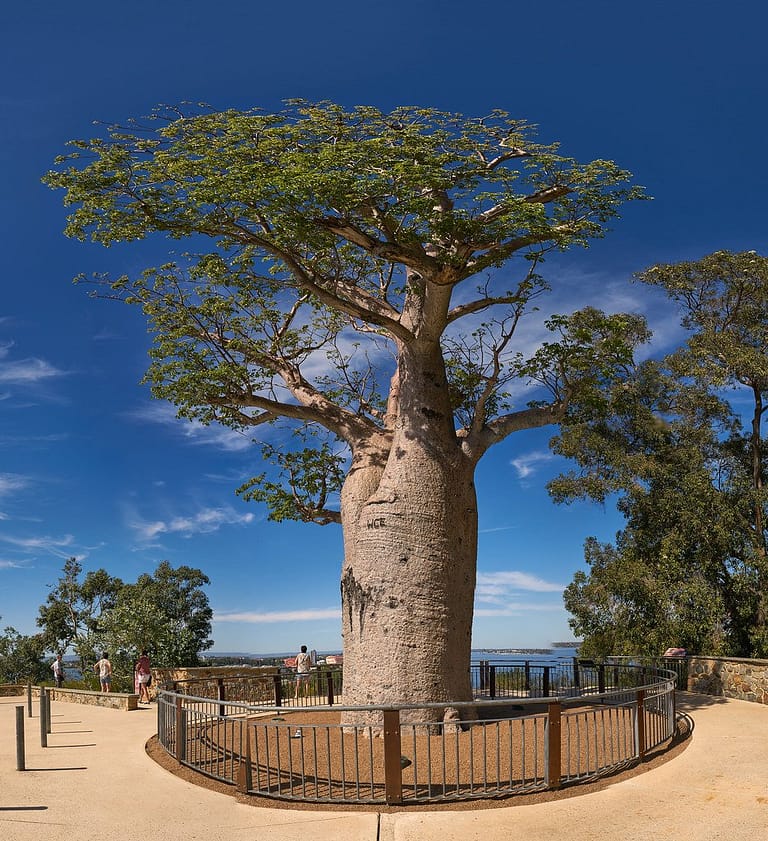Plants exhibit a myriad of extraordinary adaptations to thrive across diverse environments, from arid deserts to dense rain forests. These adaptations, honed through millennia of evolution, enable plants to manage scarce resources, withstand extreme conditions, and exploit ecological niches. From water storage strategies and carnivorous feeding habits to unique reproductive techniques and survival mechanisms, each adaptation reveals the ingenuity of plant life in responding to environmental challenges. Here we explore twelve remarkable plant adaptations that highlight the resilience and diversity of the plant kingdom.
Cacti’s Water Storage

Cacti have evolved to survive in some of the most punishing environments on Earth, primarily deserts. These plants possess thick, fleshy stems that serve as reservoirs for water storage, enabling them to endure long periods without rainfall. The stem’s green surface also takes on the role of photosynthesis, a task typically reserved for leaves in other plant species. Cacti have reduced their leaves to spines, which minimize water loss by reducing the surface area exposed to the sun and also provide protection from herbivores. This adaptation is crucial for their survival in the arid desert environment, where water is scarce and the sun is relentless.
Venus Flytrap’s Insect Trapping

The Venus Flytrap showcases a fascinating adaptation to nutrient-poor, acidic soils by evolving to consume insects. Its leaves form a snapping mechanism triggered by tiny hairs on the inner surfaces. When an unsuspecting insect touches these hairs twice in quick succession, the trap snaps shut, sealing the prey inside. Enzymes are then secreted to digest the insect, allowing the plant to absorb essential nutrients such as nitrogen. This carnivorous strategy compensates for the lack of nutrients in its native soil, enabling the Venus Flytrap to thrive in environments where other plants might fail.
Mangrove’s Salt Filtration

Mangroves exhibit a unique adaptation to live in saline coastal waters through specialized root systems that filter out salt and stabilize the plant in soft, muddy substrates. These roots also allow mangroves to “breathe” in oxygen-poor environments by extending above the surface of the water. Some species excrete excess salt through their leaves, while others block the absorption of salt at their roots. This ability to manage high salt levels allows mangroves to dominate intertidal zones, where they play a critical role in coastal ecosystems by providing habitat and preventing erosion.
Succulents’ Thick Leaves

Succulents, such as Aloe, Echeveria, and Sedum, are adapted to arid climates through their thick, fleshy leaves, which store water. These leaves often have a waxy coating or fine hairs that reduce evaporation, helping the plant retain moisture. Additionally, succulents can photosynthesize in a way that minimizes water loss, opening their stomata at night to take in carbon dioxide and closing them during the day. This adaptation allows succulents to survive in environments with intense sunlight and infrequent rainfall, where other plants might perish.
Baobab Tree’s Water Storage

The Baobab tree, native to African savannas, possesses a remarkable adaptation for surviving in drought-prone environments. Its thick, fibrous trunk is designed to store substantial amounts of water during the rainy season. This built-in reservoir enables the Baobab to withstand periods of extreme drought, as it can draw on this stored moisture to survive when water is scarce. The tree’s ability to store water in its trunk is complemented by a deciduous habit; it sheds its leaves during the dry season to reduce water loss. This adaptation ensures the Baobab’s survival and longevity in challenging climates, with some trees living for over a thousand years.
Pitcher Plant’s Pitfall Trap

The Pitcher Plant exhibits a unique adaptation to nutrient-poor environments through its modified leaves, which form deep cavities filled with digestive fluids. These cavities act as pitfall traps, luring insects with nectar and vibrant colors. Once an insect slips on the pitcher’s slippery rim, it falls into the digestive fluid, where it is broken down, allowing the plant to absorb essential nutrients. This carnivorous adaptation enables the Pitcher Plant to thrive in habitats where the soil lacks sufficient nutrients, leveraging its ingenuity to secure the necessary sustenance from its environment.
Arctic Willow’s Dwarf Growth

The Arctic Willow is adapted to survive in the harsh, cold conditions of the tundra. It grows low to the ground, often not more than a few inches tall, which minimizes its exposure to the chilling winds and reduces water loss. This dwarf growth form also helps in conserving heat by staying close to the warm ground. The small stature of the Arctic Willow allows it to escape the worst of the cold winds and take advantage of the thin layer of warmth near the earth’s surface, making it possible for it to photosynthesize and survive in an environment where few trees can.
Epiphytes’ Air Living

Epiphytes, such as orchids and bromeliads, have adapted to life in the forest canopy by growing on the surface of other plants, rather than rooting in the soil. This adaptation allows them to access sunlight and moisture more effectively in dense, competitive rainforests. Their roots are specialized for anchoring to their hosts and absorbing water and nutrients from the air, rain, or debris accumulating around them. This lifestyle enables epiphytes to thrive high above the forest floor, where light is more abundant but competition for resources is fierce.
Pine Trees’ Needle Leaves

Pine trees have adapted to cold or dry environments with their needle-like leaves. These leaves are covered in a waxy coating that reduces water loss through evaporation. The narrow shape of the needles minimizes the surface area exposed to the air, further conserving moisture. Additionally, the dark green color of pine needles allows for maximum absorption of light for photosynthesis, even in conditions where sunlight is limited, such as winter or densely forested areas. This adaptation helps pine trees to survive and remain evergreen throughout the year, even under the challenging conditions of their natural habitats.
Desert Flowers’ Brief Blooming

Desert flowers have evolved a survival strategy that allows them to thrive in extreme aridity by remaining dormant for most of the year. They can lie in wait for years until rainfall is sufficient, at which point they germinate, bloom, and seed in a rapid and synchronized fashion. This adaptation minimizes the period during which they require moisture and maximizes reproductive success during the brief window when water is available. The flowers often exhibit vibrant colors and produce copious amounts of nectar to attract pollinators quickly, ensuring pollination and seed dispersal in a very short timeframe. This strategy allows desert plants to conserve resources while still maintaining the ability to reproduce and spread their offspring across the landscape.
Floating Plants’ Buoyancy

Floating plants like water lilies possess adaptations that allow them to live on the surface of water bodies. Their leaves are often broad and flat, maximizing the surface area for photosynthesis and providing buoyancy. Additionally, many floating plants have air-filled tissues or structures, such as spongy stems and leaves, that help them remain afloat and upright on the water’s surface. This adaptation is crucial for accessing sunlight in aquatic environments and for gas exchange, as it keeps the photosynthetic parts of the plant above water while the roots remain submerged, absorbing nutrients from the water.
Tumbleweed’s Mobility

Tumbleweed, notably species like the Russian thistle, has a unique adaptation for seed dispersal in arid environments. Once the plant matures and dries out, it detaches from its root system and is driven across the landscape by the wind. As it tumbles, it scatters seeds over a wide area, ensuring that some will find suitable conditions for germination. This mobility allows the plant to colonize new areas rapidly, taking advantage of the sparse competition and the occasional moisture found in unpredictable desert climates. The adaptation is particularly effective in environments where traditional seed dispersal mechanisms might be less efficient due to the lack of water or animal vectors./i

